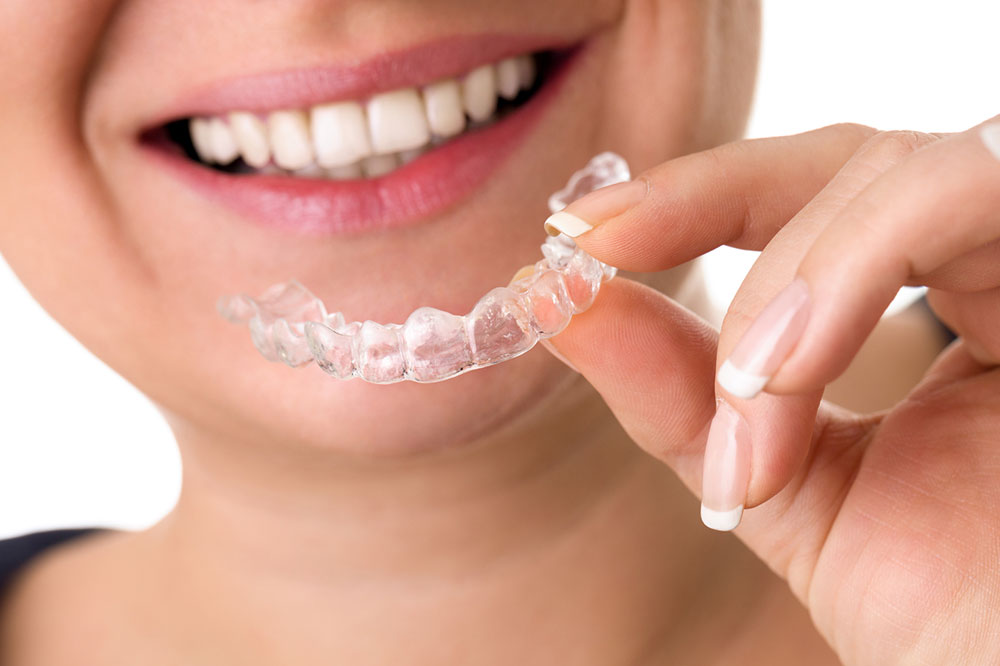Modern Orthodontics Made Easy: A Deep Dive into Invisible Aligners
Discover the latest in orthodontic treatment with our detailed guide on invisible aligners. Learn how these discreet, custom-fit devices can straighten teeth effectively while offering comfort and aesthetic appeal. Understand their benefits, costs, and suitability for different cases, and find out how they are transforming modern dental care for adults and teens alike.

Modern Orthodontics Made Easy: A Deep Dive into Invisible Aligners
Achieving a beautiful, straight smile has traditionally been associated with metal braces, which have been used for decades to correct dental misalignments. While effective, traditional braces often come with aesthetic concerns, discomfort, and lifestyle inconveniences. As dental technology advances, invisible aligners have emerged as an innovative and highly sought-after alternative for orthodontic treatment. These discreet devices are transforming the way people approach dental correction, providing a practical and aesthetically pleasing solution for patients of all ages. Whether you’re an adult seeking a subtle orthodontic option or a parent considering treatment for your teenager, understanding the nuances of invisible aligners is crucial before making a decision.
In this comprehensive guide, we explore what invisible aligners are, how they work, their benefits, and what to consider before choosing this modern dental solution.
What Are Invisible Aligners? And Why Are They Becoming Popular?
They are custom-designed, clear thermoplastic devices that are used to gently and gradually shift teeth into their ideal positions. Unlike traditional braces, which involve metal brackets and wires, invisible aligners are nearly invisible when worn, making them an excellent choice for individuals who prioritize aesthetics and minimal visibility. These aligners are made from advanced dental-grade plastics that are smooth, comfortable, and tailored precisely to each patient's dental anatomy, ensuring both effectiveness and comfort throughout the treatment process.Prominent brands such as Invisalign, ClearCorrect, Smartriner, and Inman Aligner have pioneered the development and widespread availability of these devices. Suitable for both teenagers and adults, these aligners are custom-fitted after detailed dental impressions or digital scans are taken, emphasizing the importance of professional dental consultation before commencing treatment. The process begins with your orthodontist or dentist developing a comprehensive treatment plan that maps the progression of tooth movement through multiple aligners, each slightly different from the last.
The core principle behind aligners is incremental correction. Patients receive a series of aligners that are designed to gradually move teeth into their desired positions. Typically, each set of aligners is worn for about 10 to 14 days before switching to the next stage in the series. For optimal results, aligners should be worn approximately 20 to 22 hours per day, only removed for eating, drinking, brushing, and flossing. This high wear-time tolerance is vital for ensuring that the teeth shift as planned without unnecessary delays.
One of the most appreciated aspects of invisible aligners is their discreet nature. When worn, they are virtually invisible, allowing individuals to maintain their confidence while undergoing orthodontic treatment. They are especially popular among adults who may feel self-conscious about traditional braces or are concerned about their professional appearance. Additionally, aligners offer measurable improvements in comfort—since they lack the brackets and wires that can cause mouth sores and irritation—making daily activities more comfortable during treatment.
Furthermore, aligners significantly improve oral hygiene routines. Unlike braces, which can trap food particles and complicate cleaning, aligners are removable, enabling patients to brush and floss their teeth thoroughly with ease. This feature helps reduce the risk of plaque buildup, cavities, and gum disease during treatment, promoting healthier teeth and gums in the long run.
Cost Considerations and Suitability
The expense of invisible aligners varies depending on multiple factors, including the severity of misalignment, the complexity of the case, the brand selected, and geographic location. On average, treatment costs range from $5,000 to $6,500, making them generally more expensive than traditional braces. However, many patients find the benefits—such as aesthetics, comfort, and convenience—worth the investment. Insurance coverage for aligner therapy varies, so it’s advisable to consult with your dental provider regarding coverage options and financing plans.Before choosing invisible aligners, a comprehensive dental examination and consultation are essential. Not all orthodontic cases are suitable for aligners; severe malocclusions or complex bite issues may require traditional braces or other orthodontic interventions. Your dental professional will evaluate your oral health, determine if aligners are appropriate, and develop a personalized treatment plan that aligns with your aesthetic goals and dental needs.
In conclusion, invisible aligners represent a revolution in orthodontic care, blending cutting-edge technology with patient-centered aesthetics. They provide a discreet, comfortable, and effective way to achieve a straighter smile, significantly improving both oral health and self-confidence. Proper guidance from a qualified dental professional is vital to ensure successful outcomes, whether you want to correct minor misalignments or undertake a more comprehensive orthodontic correction.





